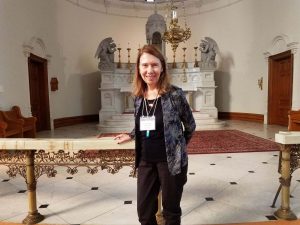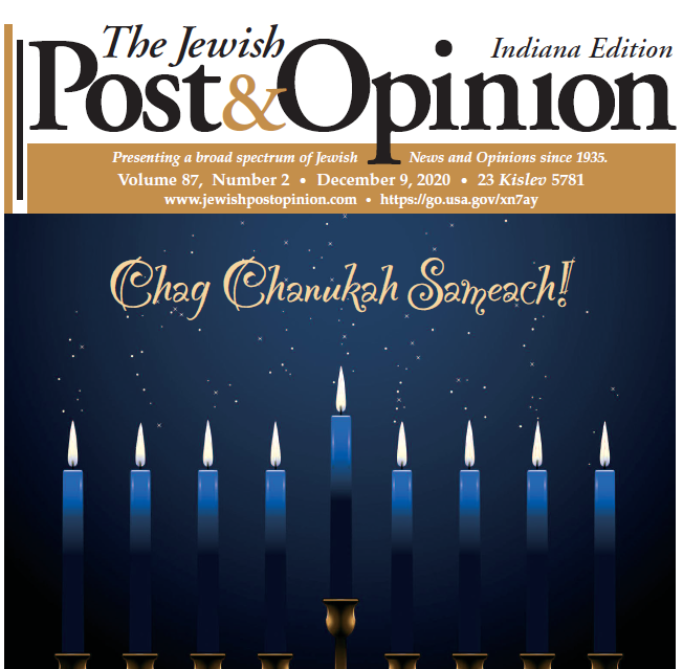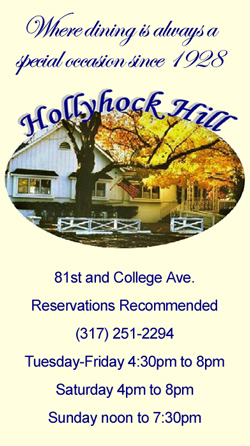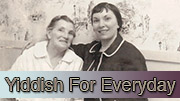
Miriam Zimmerman in St. Joseph Chapel, Pittsburgh, Oct. 21, 2018
Holocaust Educator
By Miriam L. Zimmerman
My first Lyft ride took me to Pittsburgh International Airport from Seton Hill University, the scene of a conference that I attended Oct. 21–23, 2018 titled “Women, the Holocaust, and Genocide”. (See conference coverage in JP&O, Oct. 31, 2018). The 75 minute drive from Greensburg, Pa., passed through downtown Pittsburgh. What is “Squirrel Hill?” I asked the Lyft driver, having seen an exit ramp pointing to that destination.
He did not reply that it was a historically Jewish neighborhood, only that it was a section of Pittsburgh. Neither of us could know that in just four days, it would be the scene of a horrific mass murder of Jews, the worst pogrom against Jews in the United States.
Three days later in my Holocaust class, one of my best students asked earnestly, “Why did the Nazis hate the Jews so much?” As an educator, I have come to the conclusion that in a class of 24, if one student asks a question, probably a half dozen or more students have the same question. During the ensuing discussion that reviewed prior topics, I could see other students with the same quizzical look on their faces, engaged, pondering, and, I hope, learning.
On my drive home from class that Friday afternoon, through landscape reminiscent of the Pittsburgh vistas I had so recently witnessed, I wondered where I had failed. Do they not remember their WebQuests and my PowerPoints? One week past midterms, my student’s question took us back to the beginning of the semester.
The next day, Robert Bowers, 46, an anti-Semitic truck driver, gunned down 11 people during a Shabbat service, during a baby-naming ceremony at the Tree of Life Synagogue in the Squirrel Hill neighborhood of Pittsburgh. Spewing venomous hatred against Jews, Bowers used an AR-15 assault rifle and three handguns, all legally owned and with a license to carry, according to USA Today online.
Upon hearing the news from my husband that morning, my first, perhaps cynical, reaction was, “Maybe now my students will get it.” I felt very close to the murdered Jews and to those who survived, having so recently been in the proximity of Squirrel Hill.
Two weeks later, my Holocaust class met at the Province Center of the Sisters of Notre Dame de Namur, which nestles on the south side of our campus. It was the fifth year that the Sisters opened their spacious social room to about 65 community members, including my 24 students, to provide a larger audience for Holocaust speakers.
Left, unlabeled Kristallnacht photo from the website of Yad Vashem.
In commemoration of the 80th anniversary of Kristallnacht (The Night of Shattered Glass), a program titled, “The effect of Genocide on Descendants and Survivors,” featured third generation Armenian Genocide survivor, Roxanne Makasdjian; AnneMarie Yellin, a native of Chemnitz, Germany and Kristallnacht survivor; and Gabriele Lange-Edwards, German native and granddaughter of a Holocaust denier. Although not as well researched, genocide has lasting effects on descendants of the perpetrators as well as on survivors.
AnneMarie, an experienced Holocaust speaker, movingly related how she remembers the night of Nov. 9-10, 1938. At the age of nine, her parents told her not to worry about the noises in the street, that it was just people celebrating after a party.
Picture, right, of Rolland, Abby, AnneMarie Yellin, Kimi, Megan, and Gabriele Lange-Edwards (courtesy of Kimi).
Gabriele explained to me that Germans today call that infamous night, “Reichspogromnacht,” or, Reich’s Pogrom Night, because the word, “Kristallnacht,” literally, “night of crystal” does not capture fully the horrors of that event, and connotes a party. I had not heard this before. But it was like a party, I thought, for the thugs who razed synagogues and broke storefronts of Jewish-owned businesses.
Scholars agree that Kristallnacht, the worst persecution of Jews in Nazi Germany until then, served as a turning point for both Jews and Nazis. Before that date, many German Jews, including my grandfather, had the belief that “it cannot get any worse” for the Jews. After that night, a deluge of Jews, including my grandfather, sought exit visas and affidavits to enable them to emigrate, realizing for the first time there was no future for Jews in Germany.
Since World War II did not break out until the following year, the international press remained in Germany and reported extensively on the roundup of Jews, the murders, the burning of synagogues, the destruction of Jewish-owned businesses and shops, and vandalized Jewish schools and cemeteries.
Headlines and pictures from that fateful night reverberated around the world, which did nothing in response. The turning point for Hitler was the realization that he could treat Jews with impunity, and there would be no pushback from the international community.
Arguably, the world’s response to the Holocaust did not occur until Dec. 10, 1948, ten years after Kristallnacht, with the enactment by the United Nations, of the Universal Declaration of Human Rights (UDHR). It set out, “for the first time, fundamental human rights to be universally protected. Eleanor Roosevelt … chaired the UDHR drafting committee and was integral to its adoption,” according to the UN website.
I brought a poster of the Declaration, in a frame donated by the Province Center, to the Kristallnacht program; we observed its 70th anniversary along with the 80th anniversary of the pogrom that most egregiously violated its nascent provisions. None of my students had previously learned about the UDHR.
Diana Enriquez-Field, Director of the Sister Dorothy Stang Center for Social Justice and Community Engagement and the Office of Spirituality, began our Kristallnacht commemoration with a moment of silent prayer for the victims of the Tree of Life Synagogue massacre. In Nazi Germany, you can be sure there was no public prayer for the victims of Kristallnacht.
I was brought up in Terre Haute, Ind., in a household with the mantra, “If it can happen in Germany, the most cultured and scientifically advanced country in the world, it can happen here.” The antecedent of “it” is the persecution of Jews, leading to their mass murder; in short, another Holocaust.
In the aftermath of the Pittsburgh pogrom, what gives me hope is the outpouring of support to the Jewish community from strangers, such as Pastors Gary Baddini and Daisy Segal of the Peninsula Covenant Church in Redwood City, Calif. They sent flowers and cards of caring written by their congregants to my own shul, Congregation Beth Jacob, also in Redwood City.
If Kristallnacht marked the beginning of the Jews’ demise in Germany, does the Pittsburgh massacre mark the beginning of the end for Jews in this country?
Unfortunately, I have no crystal ball and cannot predict the future. We have a president who has normalized prejudice and hatred. The question for me is how much are the people in this country like the people of Nazi Germany? It is the American people and their core values that will make the difference.
Dr. Zimmerman is professor emerita at Notre Dame de Namur University (NDNU) in Belmont, Calif., where she continues to teach the Holocaust course. She can be reached at mzimmerman@ndnu.edu.






